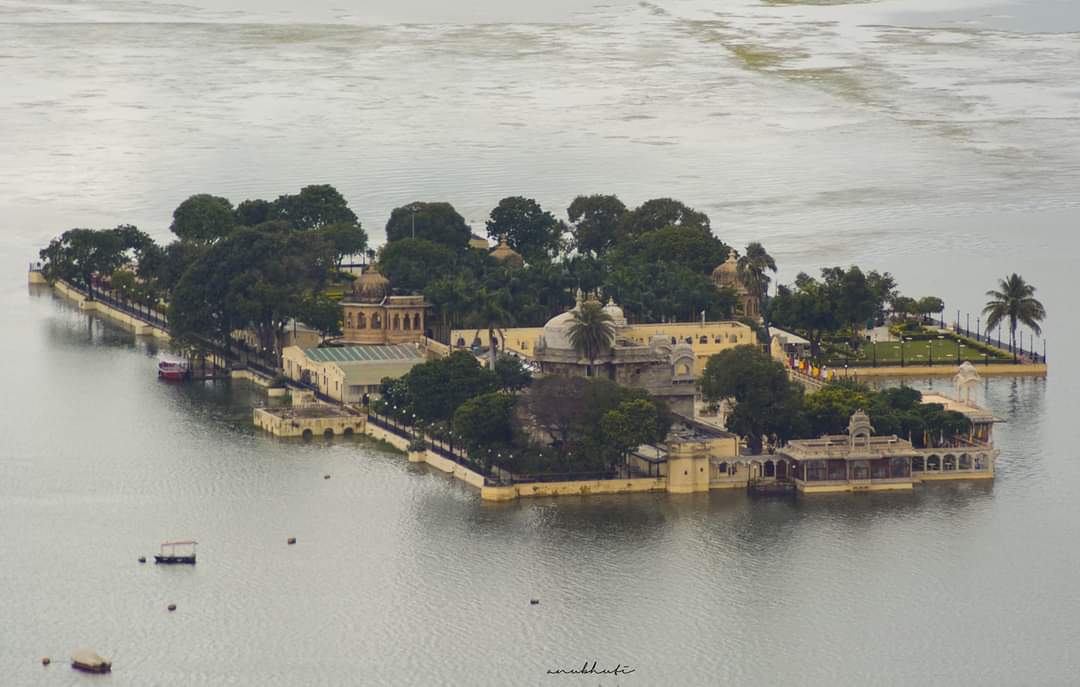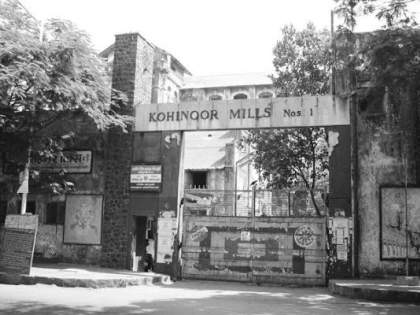“Why do you go away? So that you can come back. So that you can see the place you came from with new eyes and extra colors.” Terry Pratchett
Nestled in the embrace of Mewar, Udaipur, the City of Lakes, whispers tales of time’s gentle caress on its architectural canvas. It’s a place where history, like a masterful artist, has painted layer upon layer of beauty. From 1818 onwards, when British influence brushed against its soul, the city’s architecture began a dance of adaptation. In this enchanting journey, we uncover not just the bricks and stones, but the human stories, aspirations, and resilience woven into Udaipur’s heritage. Join us as we unveil a world where culture and climate change converge, forging a future while preserving the treasures of the past.
The Colonial Palette: From Residencies to Railways, Udaipur’s Colonial Architectural Melange
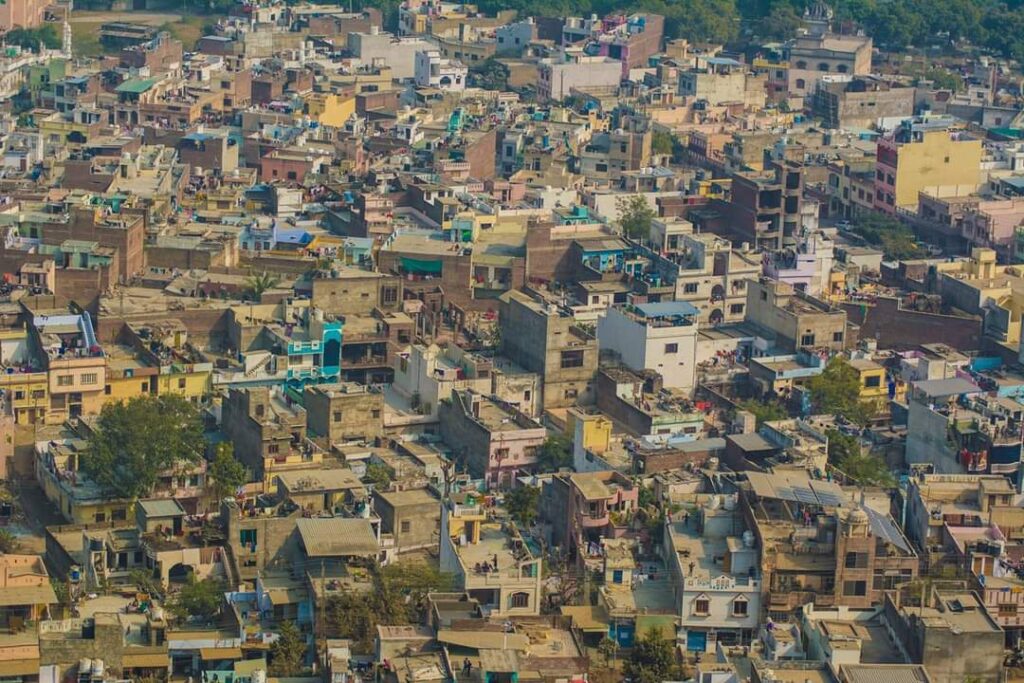
The 19th and early 20th centuries were a time of transformation for Udaipur, as British colonial influences intertwined with our indigenous culture and heritage. This fusion gave birth to a rich tapestry of architectural styles, ranging from British Residencies to essential institutions like Police Courts, Custom Offices, Dispensaries, and Hospitals. These structures coexisted with the charm of Bungalows, Lodges, and Quarters meticulously designed to facilitate the smooth functioning of the Mewar-British Administration.
At the heart of this architectural renaissance were British utilitarian philosophies borrowed from England. These ideals led to the conversion of vast tracts of arable farmland through innovative irrigation schemes and the development of enhanced physical infrastructure, including canal systems. Notably, Swarup Sagar, a testament to technological prowess, materialized in 1861 A.D., linking Lake Pichola to Fateh Sagar. This ecologically beneficial endeavor, coupled with its strategic proximity to the walled city, spurred the creation of Residential Bungalows and Lodges that embodied the evolving spirit of the times. The inception of the Mewar State Railway in 1875 A.D. further fueled Swarup Sagar’s growth, culminating in the establishment of the Canal Colony to house and train railway staff. Swarup Sagar, immaculately preserved, stands today as an evocative reflection of urban development schemes, planning paradigms, and architectural innovations that defined the Mewar-British Phase.
Paradoxically, despite the profound significance of Udaipur’s 19th and early 20th-century heritage, its contemporary recognition and preservation have lagged its true value. This disjuncture is evident in the less-than-ideal condition of this heritage, the underdeveloped conservation methodologies, and the absence of comprehensive heritage management models. This article aspires to illuminate the profound significance of Udaipur’s 19th and early 20th-century (1818-1947 A.D.) heritage as an exemplary instance of Colonial Town Planning and Architecture. We embark on an exhaustive exploration of the Planning and Built Heritage of Swarup Sagar as a pilot case, seeking to pave the path forward.
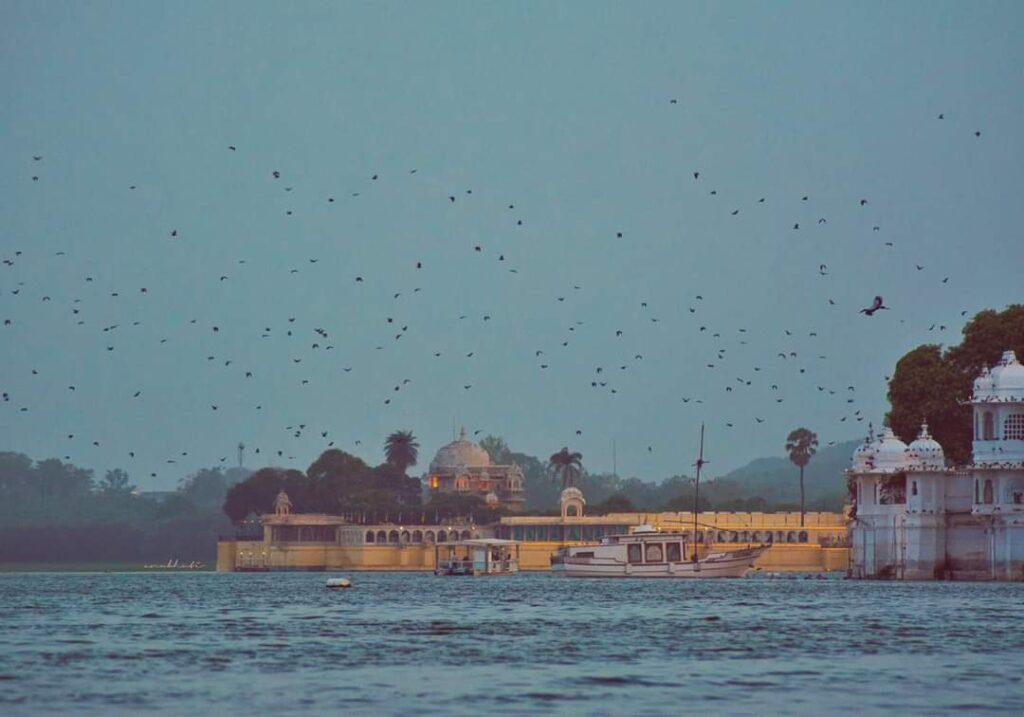
Weathering the Storm: Udaipur’s Architectural Heritage and Climate Challenge
In the contemporary milieu, Udaipur’s architectural heritage confronts an unprecedented adversary: climate change. The ramifications of this global phenomenon have penetrated the tranquil ambiance of the City of Lakes, subjecting its resilience and adaptability to rigorous tests. Lake Pichola, once the serene emblem of Udaipur and an indispensable water source, now bears visible scars with fluctuating water levels which disrupt the city’s water supply, imperil its vibrant tourism industry, and cast shadows on the livelihoods of those dependent on the lake. To navigate these climatic trials, Udaipur must confront its vulnerabilities and chart an adaptive course. Initiatives encompassing the protection of water resources, promotion of sustainable agriculture, and investments in renewable energy sources have assumed pivotal roles in the city’s comprehensive strategy.
The conservation of its architectural heritage takes on an added layer of urgency. The city’s historic structures transcend being mere repositories of culture and history; they are tangible embodiments of sustainable architectural practices that have withstood the test of centuries. Udaipur’s heritage preservation must transcend the realm of mere conservation; it must seamlessly integrate sustainable practices. Adaptive reuse of historical buildings, infusion of green design principles, and minimization of environmental footprints must take center stage in city’s conservation strategies. This trajectory of Udaipur’s journey toward heritage conservation and climate resilience is steered by localized governance, fortified by symbiotic global partnerships. Local authorities wield significant influence by promulgating policies and regulations that incentivize sustainable practices and green construction which provides Udaipur with the intellectual arsenal and resources requisite to surmount multifaceted challenges.
A Case in Point: Swarup Sagar’s Heritage: Anchoring the Future in the Riches of the Past
Lifestyle changes and technology have triggered transformations in the Swarup Sagar Area. Original structures now face strain and irreversible damage. Notably, public spaces which were once mixed with residential zones and bungalows offered scenic views are now subject to additional loads and alterations with high-density residential use, dispensaries, commercial establishments, and offices transforming the area. Post-independence, functions changed, some heritage sites adaptively repurposed. Neglect and deterioration threaten these structures. Tailored Development Control Rules are crucial to preserve Swarup Sagar’s character and accommodate contemporary needs.
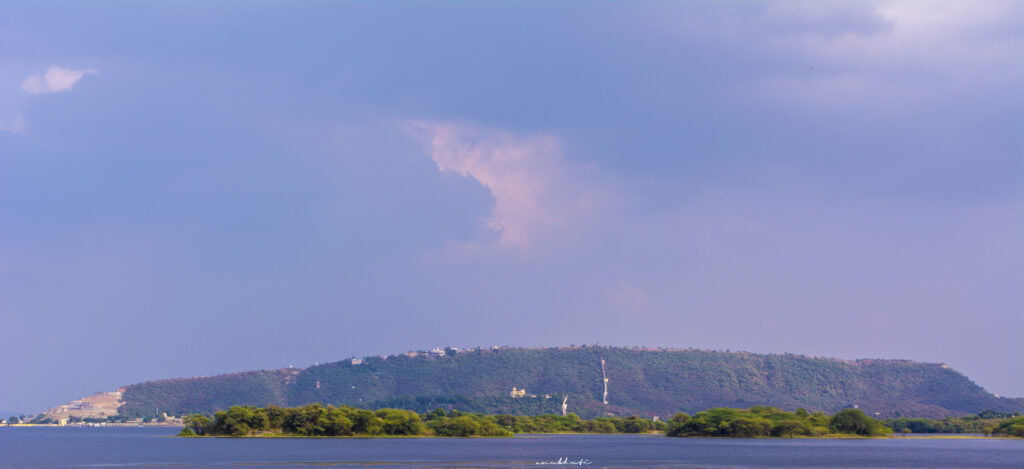
In the heart of Udaipur, where history whispers through every stone and architectural marvel, a battle brews. Residential green spaces are threatened by insensible constructions, straying from the area’s architectural essence, uncovered storm drains pose hazards. Preservation and adaptation must harmonize to maintain its historical significance while serving modern needs. Proposals include establishing a Heritage Cell with an expert panel in Udaipur Municipal Corporation, delineating Heritage Precinct with distinct areas of significant concentrations of 19th and early 20th-century heritage where each precinct shall be governed by development control regulations tailored to preserve its unique character.
A strategic circulation plan will alleviate congestion at heritage nodes. Open space revitalization to ensure Udaipur’s rich heritage endures with areas carefully categorized by cultural significance and restored to their former glory, their authenticity preserved for generations to come.
From maintaining current Floor Space Index (FSI) levels to upholding ideal scale and proportion, capping building heights along the lake edge, and harmonizing with existing architectural tapestry where every new addition sings in tune with the existing architectural chorus, our guidelines weave a narrative of conservation and celebration. They ensure that Swarup Sagar’s heritage not only endures but flourishes, seamlessly blending the past into the vibrant fabric of the future.
A Bridge to Sustainable Horizons:
Udaipur, with its architectural tapestry spanning epochs, stands as a crossroads of history, heritage, and climate change. Its 19th and early 20th-century heritage, a living testament to colonial influences and indigenous endurance, embodies an enduring chronicle of architectural evolution. In a world grappling with the relentless specter of climate change, Udaipur’s challenge is not merely to enshrine its past but to etch out a sustainable future. The city’s heritage, a harmonious blend of antiquity and modernity, encapsulates the equilibrium attainable between architecture, culture, and nature.
As humanity navigates the tempestuous seas of climate change, let Udaipur’s architectural heritage serve as a steadfast beacon, reminding us that conservation and sustainability can indeed coexist. By safeguarding its past, Udaipur forges a luminous future—a citadel of resilience and adaptability in the face of monumental challenges.



